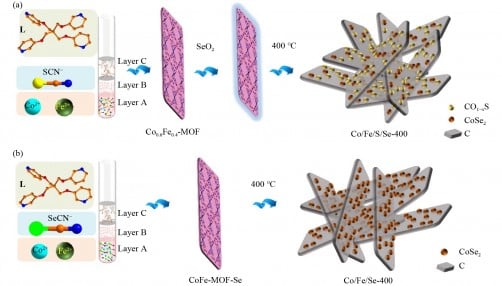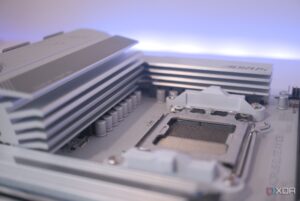
A research team from Jianghan University and Fuzhou University has developed innovative selenium-containing electrocatalysts aimed at enhancing overall water splitting efficiency. The group, led by researchers Wang-ting Lu, Fan Yu, and Yun Zheng, utilized two-dimensional (2D) metal-organic frameworks (MOFs) as templates to create these advanced materials.
Traditional methods for producing MOF-derived selenides often involve high-energy consumption and pose challenges in controlling the structural and compositional uniformity during pyrolysis. To address these issues, the researchers employed two distinct strategies for incorporating selenium into the cobalt-iron (Co–Fe) MOF. The first method involved etching the prepared MOF with a selenium dioxide (SeO2) solution, while the second method substituted thiocyanate (SCN−) with selenocyanate (SeCN−) as a building block.
Innovative Approaches to Electrocatalysis
The electrochemical performance of the resulting selenium-containing electrocatalysts was rigorously evaluated for their ability to facilitate both the hydrogen evolution reaction (HER) and the oxygen evolution reaction (OER). The findings indicate that both strategies for introducing selenium significantly enhance HER performance during overall water splitting.
The high electrochemical activity of these catalysts is attributed to their unique 2D hierarchical porous structure, which promotes efficient electron and ion transport. Additionally, the strong synergistic effects between the various components within the material contribute to the observed improvements in performance.
This research not only demonstrates the potential of layered MOFs with selenium or sulfur-containing linkers as effective water splitting catalysts but also provides an innovative pathway for synthesizing MOF-based metallic selenides.
The study underscores the feasibility of developing economical and low-energy-consuming electrocatalysts, which could have significant implications for advancing renewable energy technologies. The findings are set to be published in an upcoming issue of a scientific journal, further contributing to the understanding of electrocatalysis in water splitting applications.
By leveraging the capabilities of metal-organic frameworks, the team is paving the way for more sustainable solutions in energy production, highlighting the importance of continued research in this critical field.






